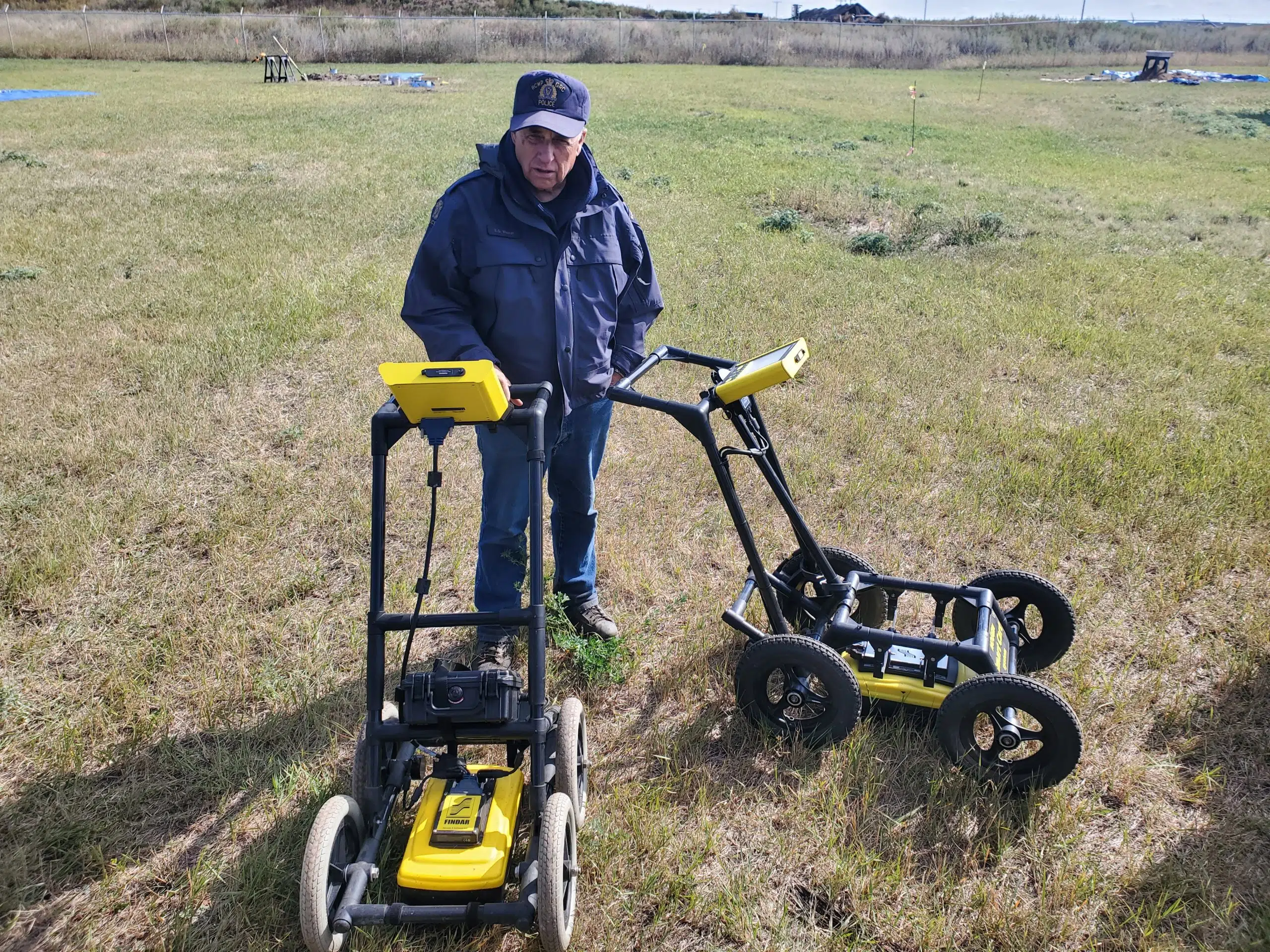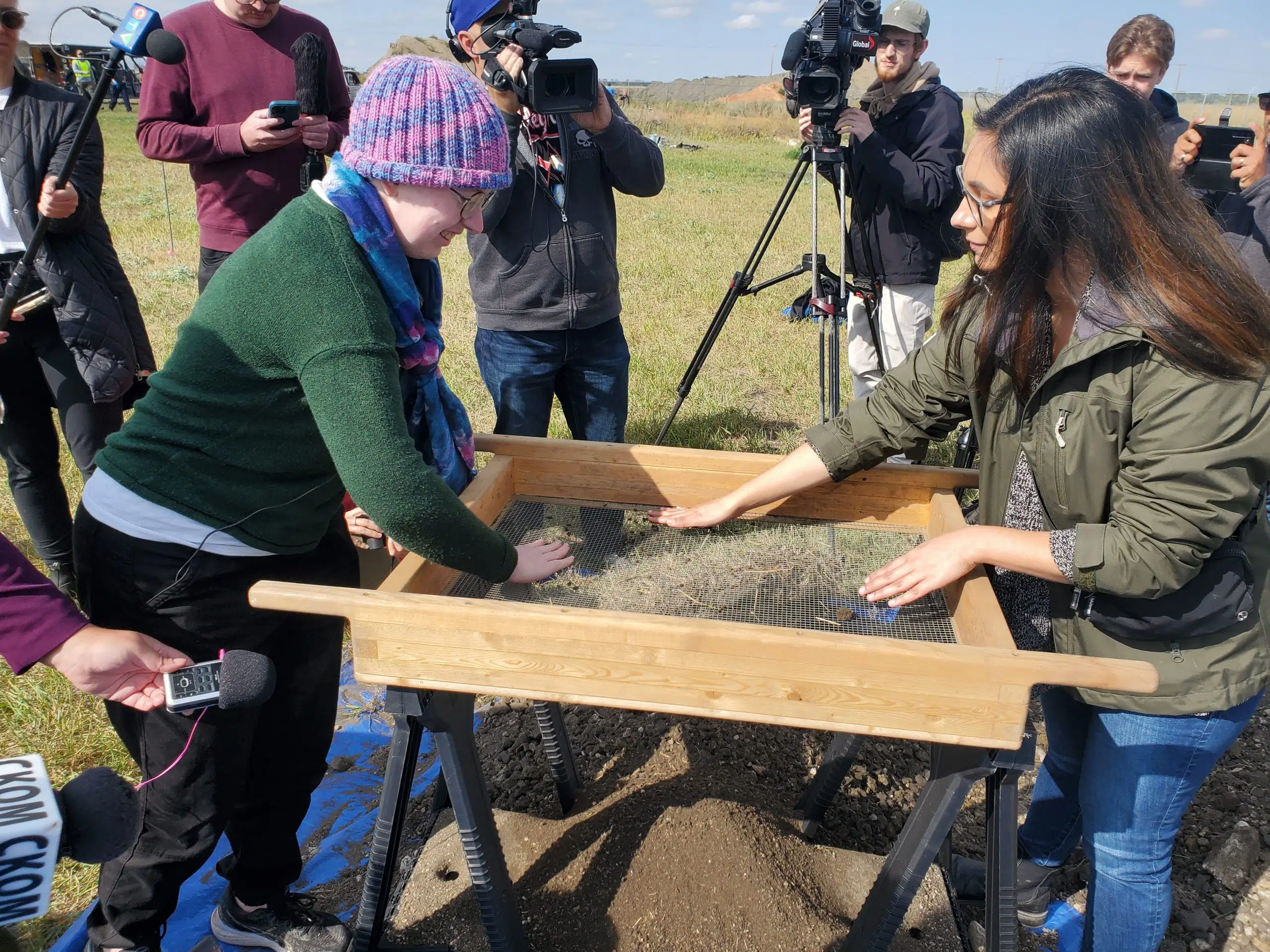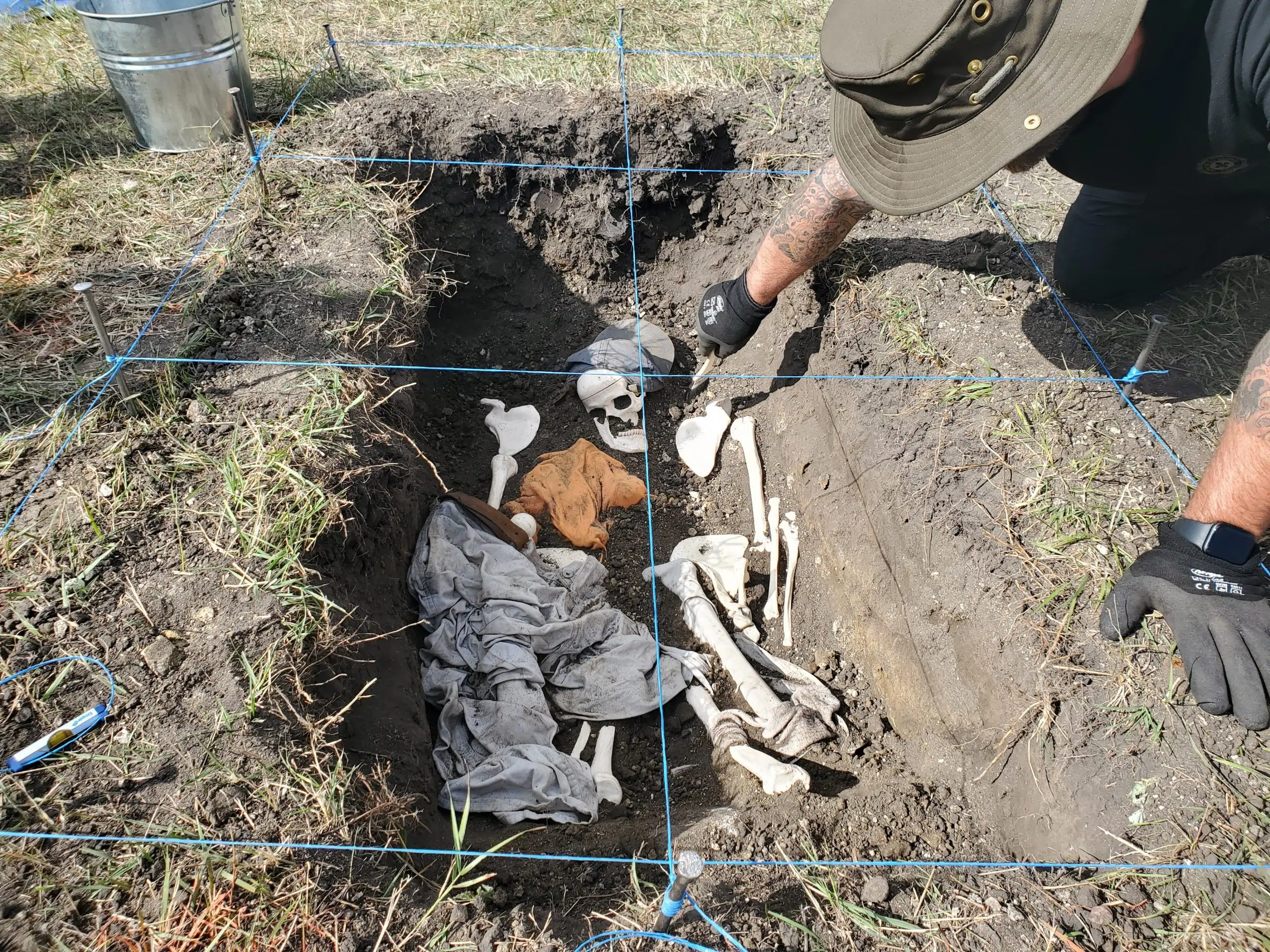
The Saskatchewan RCMP is hosting a Forensic Anthropology and Identification of Human Remains course on the outskirts of Warman this week with investigators from across Canada and the United States attending.
Dr. Ernie Walker, a forensic expert with the RCMP is the instructor for the course.
He says it took about six months to plan the course which features a number of simulated grave sites which the investigators are digging up over the course of the week.
“To procure all of the exhibits, garments, clothes, cell phones, needles, all kinds of ordinates, shell casings, shot gun shells, I mean it’s all there.”

Dr. Walker says they try and hold the course every couple of years with the RCMP hosting the workshop for decades now. This is the first time it’s been held in Warman.
(Pictured on the left is Dr. Walker with ground penetrating radar machines.)
The Warman Fire Department welcomed the RCMP and their participants to their training grounds to conduct the exercises. Fire Chief of the Warman Fire Department, Russ Austin says the RCMP is their policing agency in their city, therefore they built on their partnership of helping one another out.
“Anytime that we’ve ever asked them for, extra training for evidence recovery or traffic scene stuff, they’ve also been gracious and come and helped us.”
Christian Rouleau with the Quebec Provincial Police Service is one of the investigators taking part in the course. He says he’s learned some new skills thanks to the course.
“Mostly, bones…how to (determine) if it’s an animal bone or human bone. It’s going to be real helpful for me.
Ground penetrating radar machines, metal detectors, shovels and brushes and drones are all being used by the participants.
Sgt. Donna Zawislak with the Saskatchewan RCMP says the training allows officers and investigators to then share their experience and expertise with other policing agencies.
“There are police forces out there that are a little more isolated and don’t have the experience in maybe their careers and may only do one search where they have to remove human remains from a grave. So they know they can call up other agencies or other people and say, we need some assistance, these are the circumstances and we can come together to problem solve.”
The course has been held in Dundurn and outside of Saskatoon in past years.

(Pictured above are two reporters sifting through dirt, one of the processes in examining a grave excavation site.)

(Pictured above is Christian Rouleau with the Quebec Provincial Police Service taking part in one of the digging exercises.)

























